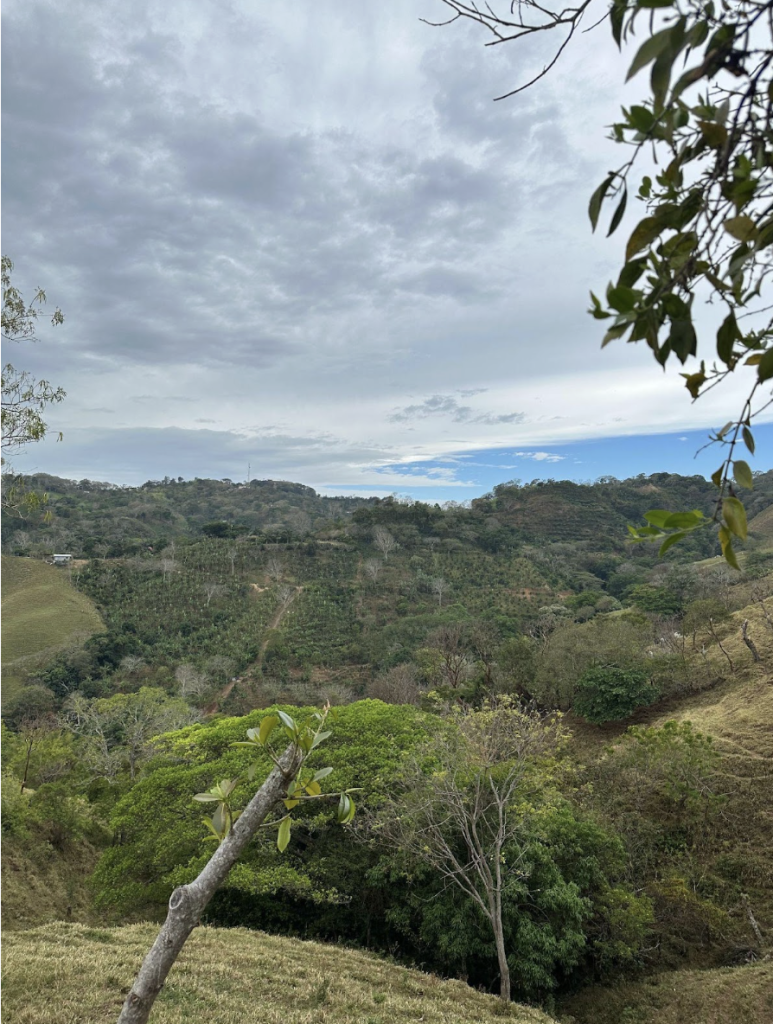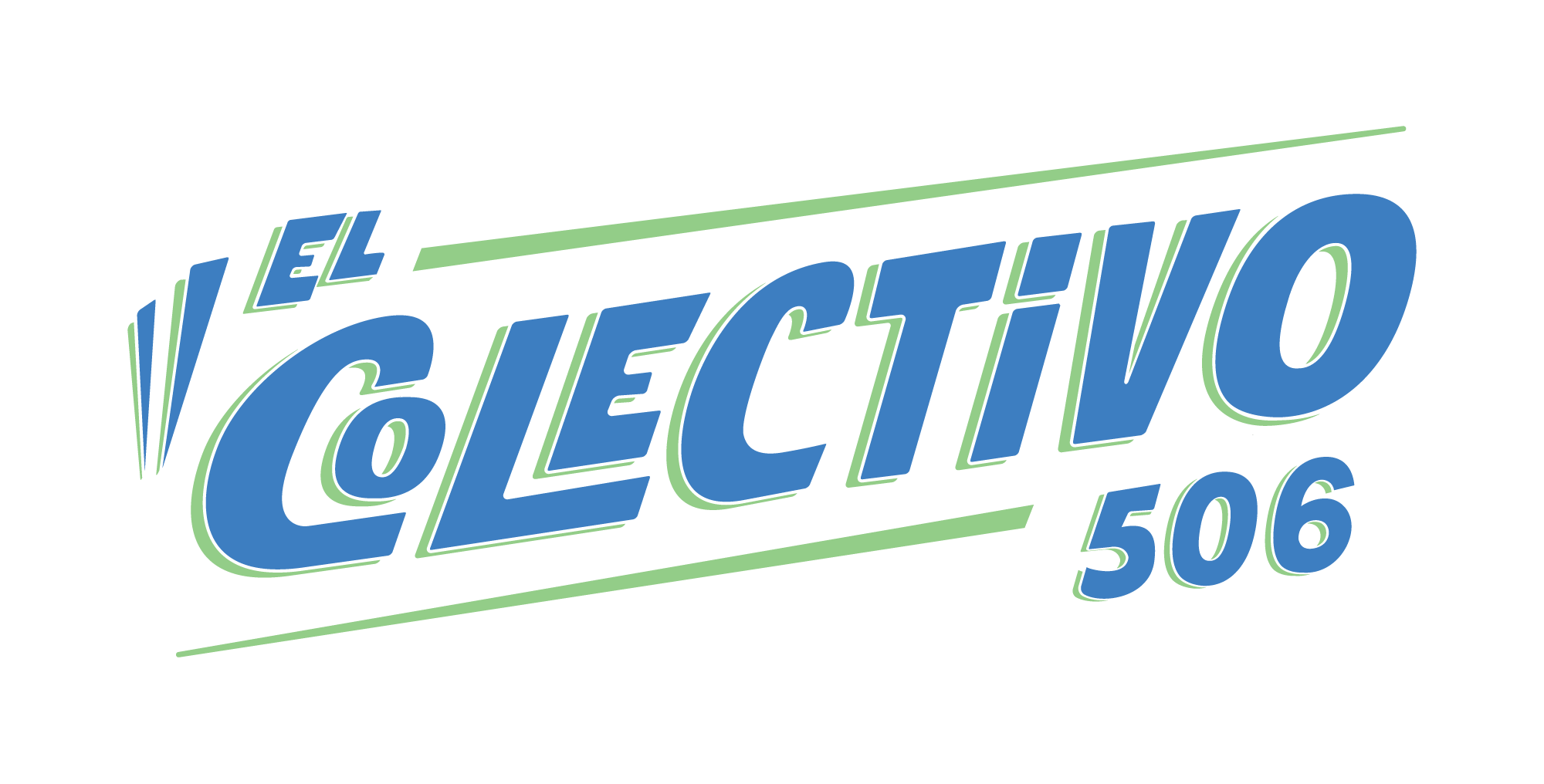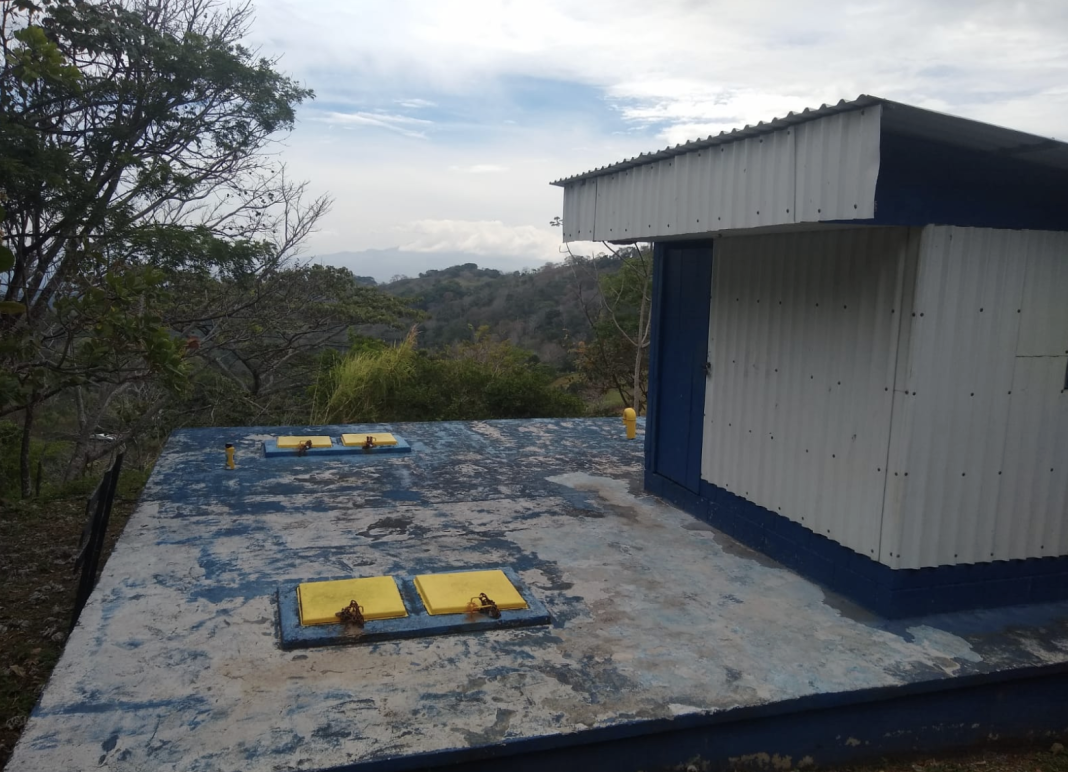In Costa Rica, nearly 93% of the population has access to potable water. Water can be drunk straight from the tap, a characteristic that sets the country apart from its Latin American neighbors. Part of this success comes from the system of co-management that has been firmly established in the country since the 1980s. This system of co-management sees the Costa Rican Institute of Aqueducts and Sewers (AyA) partner with local community-driven organizations called Administrating Associations of Sewers and Aqueducts (ASADAs). These organizations are often partly staffed by volunteers, meaning that many of the people involved in an ASADA, all the way up to its Board of Directors, volunteer their time to do this work.
The ASADA Mercedes-San Isidro is responsible for managing the communal aqueducts in Barrio Mercedes, a district in the canton of Atenas, Alajuela. Mercedes is home to approximately 4,000 citizens; the ASADA is estimated to serve 426 households, consisting of approximately 1,500 people. We visited this ASADA as part of our ecological resilience class to understand the effectiveness of their management practices, and to get a better understanding of the complex obstacles faced by community-led water initiatives in Costa Rica.

Distribution challenges
Despite the rather stable water supply within Costa Rica compared to most of Central America, the country faces distribution challenges as water demand grows. This has been exacerbated by a variety of factors, including mounting climatic uncertainty due to global climate change.
In addition, the current systems for water management are rather convoluted at an institutional level. The Ministry of the Environment and Energy (MINAE); the Ministry of Health; the Public Service Regulatory Agency (ARESEP); and the Institute of Aqueducts and Sewers (AyA), as well as a mountain of other regulatory agencies, are all involved in water resources management. With so many agencies participating, duties often overlap, meaning that the work that agencies do can become redundant or tasks that are supposed to be fulfilled by one agency are never completed.
Bureaucratic red tape means agencies have to consult one another to accomplish their basic duties, which creates a long trail of federal oversight in order to obtain government approval. Along with creating project delays, this can increase project costs despite the already minimal financial support for the water supply system. To make matters worse, the water supply system has to cope with waste treatment; pollution from the agricultural, public, or tourism sectors; and environmental factors such as deforestation.
All of these compounding issues are passed down to the resident-led ASADAs, which was made clear during our visit to the ASADA Mercedes. However, perhaps the greatest challenge that ASADAs face at a local level is the lackluster community engagement. Attendances at general assemblies are often low, meaning that community input is dwindling despite the increasing social ramifications of assembly decisions. Community members have a voice in this form of participatory democracy, but give it up by not attending general assemblies. This means that community members are sometimes uninformed about the regulations regarding water management or uneducated about how ASADAs function, leaving them disgruntled after the organization comes to an agreement and creates a fissure between the community organization and the community.
How does ASADA Mercedes respond?
ASADA Mercedes has had to become increasingly innovative in its responses to its infrastructural challenges. The aforementioned bureaucratic red tape makes tackling community engagement particularly difficult. Our conversations with board members revealed that they would try to motivate general assembly attendance rates by offering raffles for those who attended assembly meetings. This proved quite effective, but was quickly shut down as bureaucratic oversight from AyA deemed it unlawful.
Today, the ASADA is limited to traditional publicity efforts, travelling from door to door to notify each resident of their invitation to the general assemblies. They offer snacks and refreshments at their meetings, but they say that this has not garnered a motivated response from the community members.
Notably, however, the ASADA has forged a robust connection with various community members in the Atenas area. Their limited funds from AyA has forced the organization to seek funding from other sources. Their partnership with the Coopeatenas supermarket has given the organization leverage in purchasing land that they have used to develop physical infrastructure such as water tanks, or as a buffer for the streams from which they collect water. Coopeatenas benefits from the advertising that they can place on these lands, as well as the reputation they garner by partnering with this community organization.
The valley in which the ASADA’s main water collection tank is located is occupied by various cattle ranches and farms, which can produce unwanted contaminants that may leak into waterways. Thanks to the contributions from Coopeatenas, the ASADA’s land minimizes the contact these contaminants have with their waterways. While almost all the water the ASADA collects in its primary tank is potable, the ASADA is mandated to purify its water with chemicals and perform routine water tests.

What is the evidence of their impact in the community?
At first glance, the evidence of an ASADA’s impact on its community may seem obvious: if people have water service at their homes, then the ASADA is doing its job. But something that many people see as mundane and normal, such as running water, is the culmination of the work of dozens of people. This accomplishment does not garner nearly as much attention as it should.
Beyond the successful supply of water to homes, customer feedback is the most important gauge of the effectiveness of the ASADA’s service. A 2023 survey conducted by professor Milena Cambronero and 29 students at the School for Field Studies (SFS) in Atenas sought to obtain customer feedback on the performance of the ASADA Mercedes-San Isidro. They collected 64 surveys from community members—a partial sample, as there are more than 400 houses that receive service from ASADA Mercedes-San Isidro.
The results show a predominantly positive perception within the community about the service that the ASADA provides. One result of note was that 32% of respondents had experienced a loss of water service either once a month or multiple times per month. This highlights the logistical challenges that the ASADA faces in moving water through rough terrain, facing climate uncertainty, and having a shortage of plumbers and the resources to make repairs.
Another result was that 52% of survey respondents had not visited their local springs. This is understandable, as the spring is challenging to reach: it requires traversing steep mountains on foot. A large majority, 71.4% of respondents, said that there are no threats to the communal water springs. These two statistics highlight the insufficiency of community involvement in natural resource management.
However, 85.2% of respondents said that they would participate in future activities to help preserve the water and environment. There is hope for the ASADA because of the interest within the community in environmental issues, and an awareness that their water could be at risk.
Insights to adopt
Over the years, the challenges that ASADA Mercedes has had to face have only compounded. The challenges faced in incentivizing community involvement has also had detrimental effects on the board of directors. Only homeowners in the Mercedes area are eligible for the board of directors. However, the homeowner title may be in the name of somebody who doesn’t reside in that community, or somebody who is deceased.
It is also important to consider the social implications of home ownership: in Costa Rica, women are often less likely to own homes due to pervasive gender disparities in labor and income. It is thus much more accessible for men to attain a position on a board of directors for an ASADA than it is for women. However, Costa Rican law mandates that an ASADA must have equal representation of men and women on a board of directors. This is something that the ASADA Mercedes has had to contemplate during its operations. How does an ASADA manage this equal representation if there is not a sufficient pool of women homeowners interested, or able to participate, in ASADA management? ASADAs are able to petition in such a case, but that can leave the board of directors completely dominated by male perspectives, the prevention of which was the inspiration for this law in the first place.
This issue of gender disparity continues to trouble ASADAs across the country, and will likely not be resolved until deeper societal inequities are remedied. Changing the policy of ASADA participation to include any community member would increase the potential pool of candidates willing to work to assist the ASADA and possibly spur an increase in community engagement.
What limitations challenge the ASADA?
ASADA Mercedes is a small community organization with only a handful of employees and volunteers. Managing a network of water pipelines that serve 426 households is a challenging task, and with AyA providing little to no practical support aside from handing down regulations that often hamper the ASADA’s effort, this limits their ability to provide the most effective service. The ASADAs are also obstructed by regulations from ARESEP, which determines the prices for public services. ARESEP has not raised prices in five years, despite the rising costs for the ASADAs. This makes it increasingly difficult to maintain the complex network of infrastructure required to distribute water to an entire community. These difficulties are only being exacerbated by climate change.
Climate change causes variances in what used to be consistent wet and dry seasons, which creates uncertainty about water availability throughout the year. Droughts and floods have the capability to seriously harm water infrastructure. ASADAs need community engagement in order to address these serious challenges, and people are only motivated to engage with the ASADAs only after their water supply has been impacted. ASADAs need to make regulatory adjustments in order to attract more community involvement.
Costa Rica has achieved what few other countries in Latin America could by providing 93% potable water coverage to the entire country, according to ECLAC. This achievement is in part due to the hard work of community based ASADAs and the co-management strategy between larger government agencies and local communities. The ASADA of Barrio Mercedes is one example of an ASADA that successfully supplies water to a community of 1,500 people with a staff consisting of a handful of people. While this success does not come without its challenges, the ASADA Mercedes has forged connections with the local community to increase participation.






